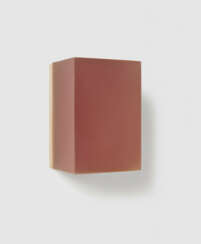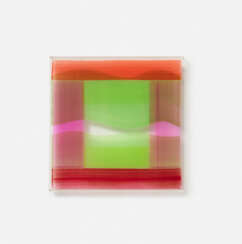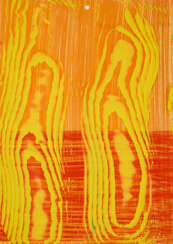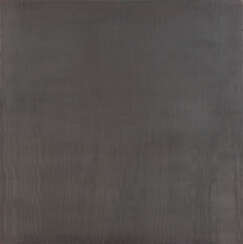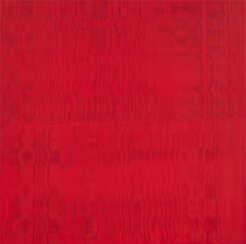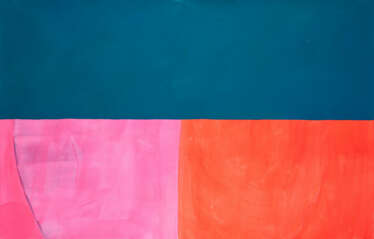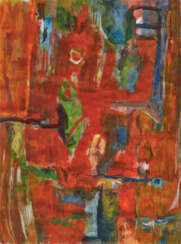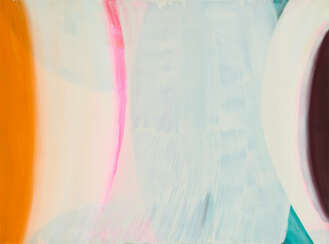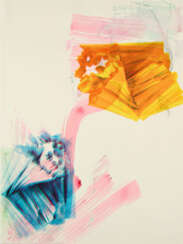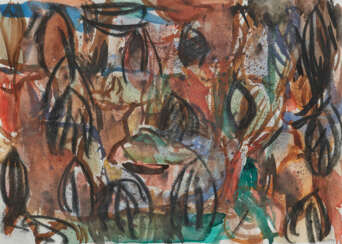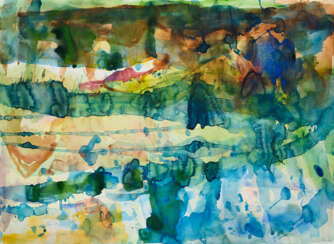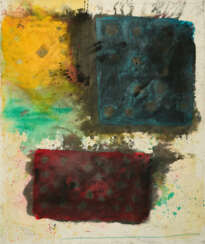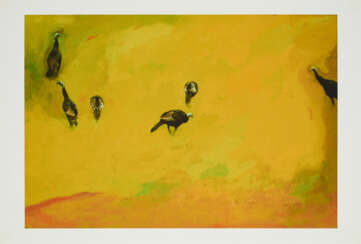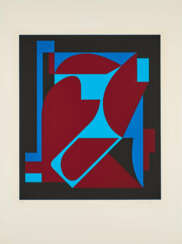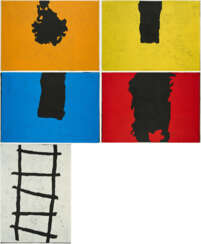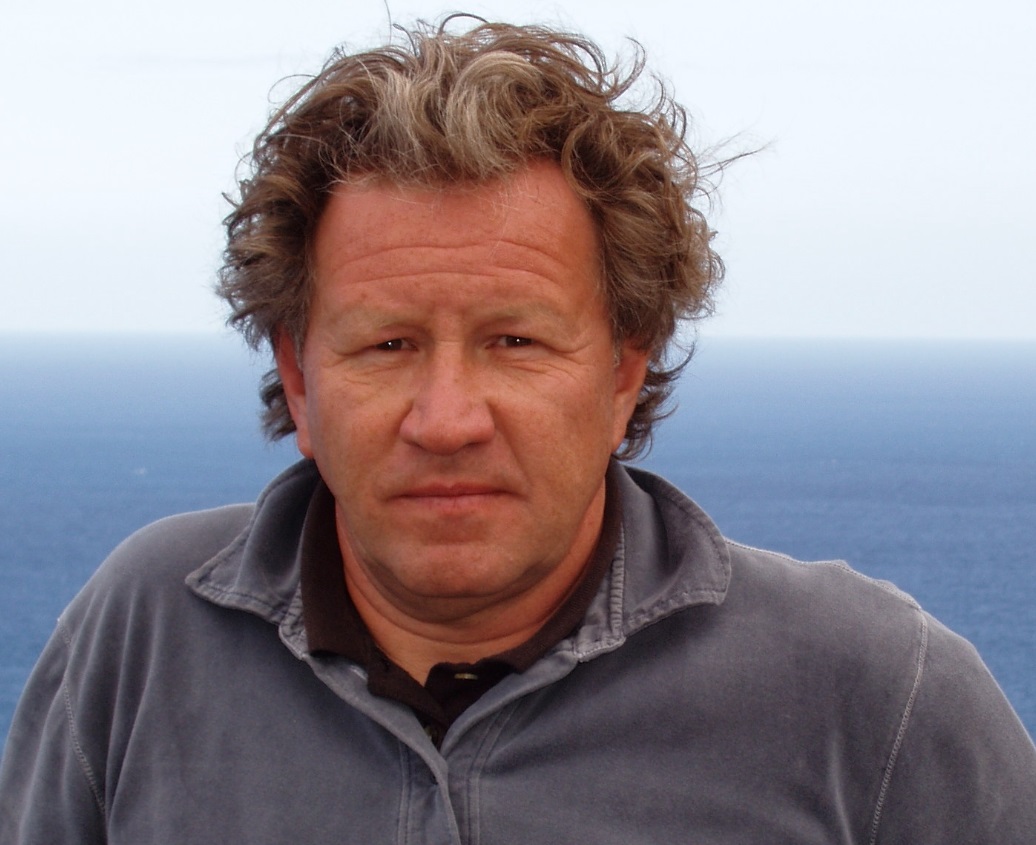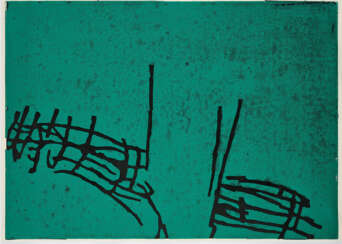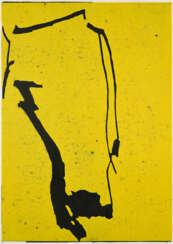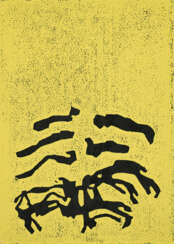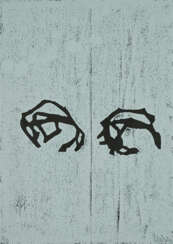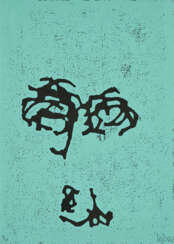
120 Works from a Corporate Collection - Part III
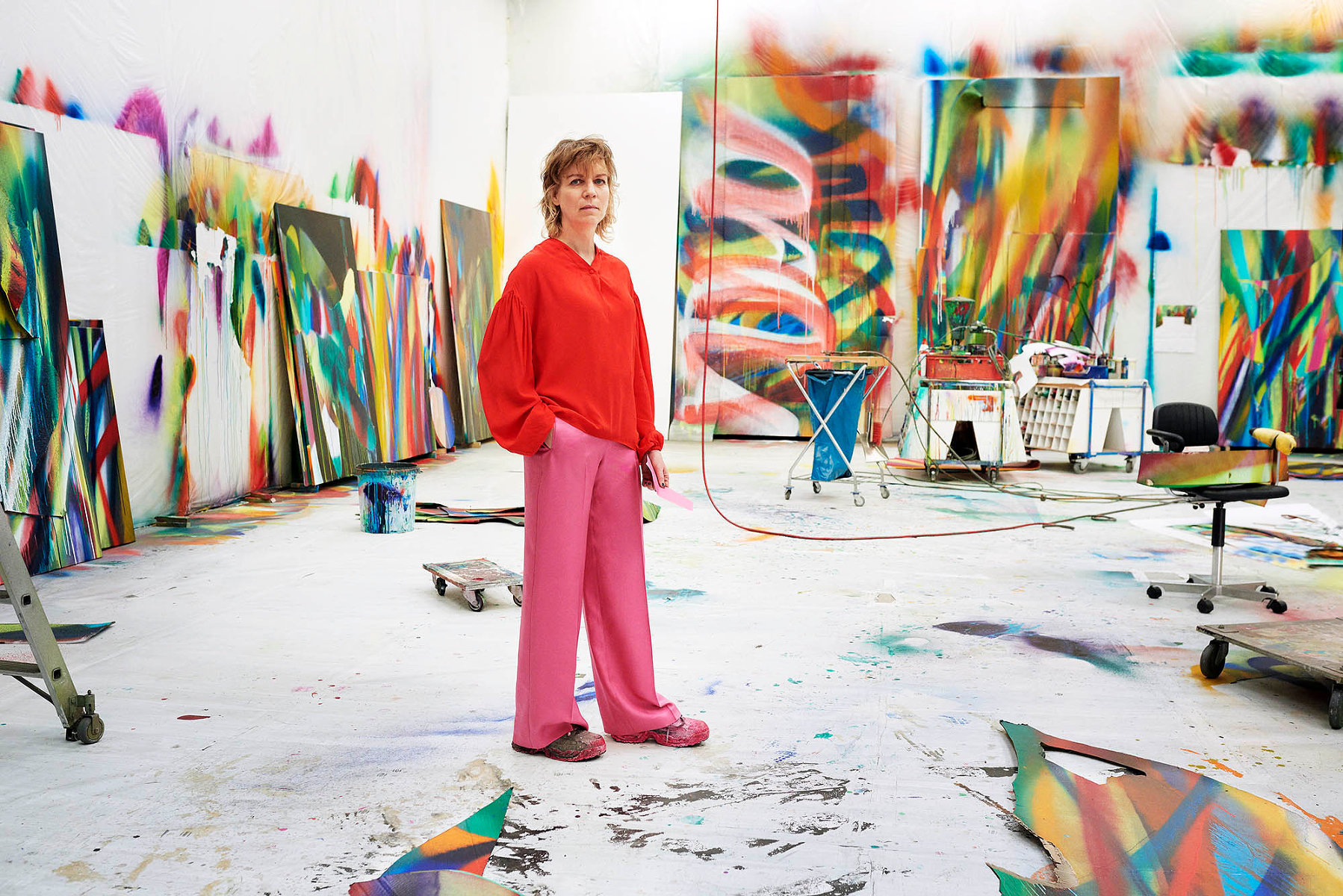
Katharina Grosse is a German artist. As an artist, Grosse's work employs a use of architecture, sculpture and painting. She is known for her large-scale, site-related installations to create immersive visual experiences. She has been using an industrial paint-sprayer to apply prismatic swaths of color to a variety of surfaces since the late 1990s, and often uses bright, unmixed sprayed-on acrylic paints to create both large-scale sculptural elements and smaller wall works.

Katharina Grosse is a German artist. As an artist, Grosse's work employs a use of architecture, sculpture and painting. She is known for her large-scale, site-related installations to create immersive visual experiences. She has been using an industrial paint-sprayer to apply prismatic swaths of color to a variety of surfaces since the late 1990s, and often uses bright, unmixed sprayed-on acrylic paints to create both large-scale sculptural elements and smaller wall works.
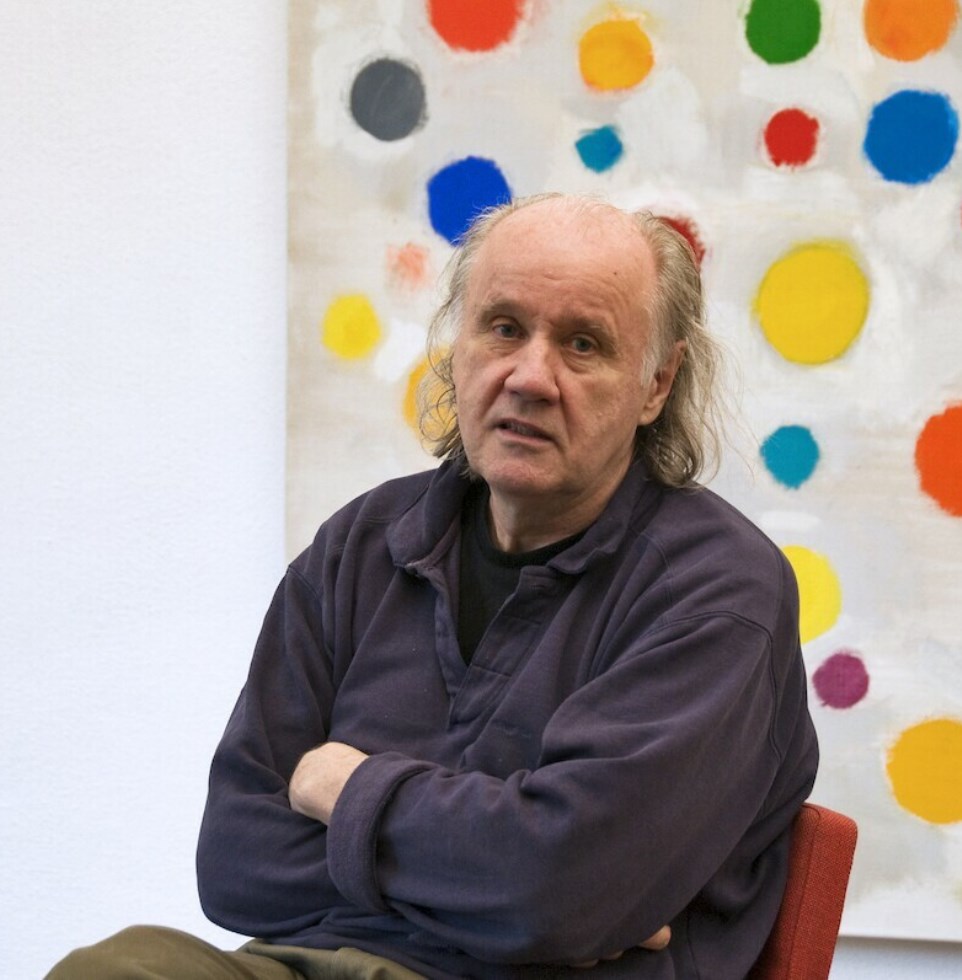
Jerry Zeniuk, a German and American artist of Ukrainian origin, is celebrated for his pioneering role in the realms of analytical, fundamental, and radical painting, movements that flourished primarily in the USA, Italy, and Germany during the 1970s. His art is distinguished by a meticulous focus on the essence of painting, exploring its potential and experiential spaces through a minimalist yet profound approach. Zeniuk's notable participation in documenta 6 in Kassel in 1977 underscored his significant contribution to these artistic trends, which has been recognized in numerous retrospectives.
Jerry Zeniuk's career includes an influential tenure as a professor at the Academy of Fine Arts in Munich from 1993 to 2011, further cementing his impact on the art world. His works, characterized by their subtle yet impactful exploration of color and form, have been included in the collections of prestigious institutions such as the Lenbachhaus in Munich, Neue Galerie in Kassel, Neues Museum Weserburg in Bremen, and internationally at the FRAC - Pays de la Loire in France and Kunstmuseum Winterthur in Switzerland, among others.
For collectors and art experts, Jerry Zeniuk's work represents a nuanced and intellectual approach to modern painting, offering depth and contemplation in each piece. His contributions have not only shaped the trajectory of contemporary art but also offer a timeless appeal to those who appreciate the layered complexities of visual expression.
Stay updated on Jerry Zeniuk's exhibitions and available works by signing up for newsletters tailored for art collectors and enthusiasts. This subscription ensures you remain informed about the latest sales and auction events featuring Zeniuk's work, providing unique opportunities to engage with the evolving landscape of contemporary art.
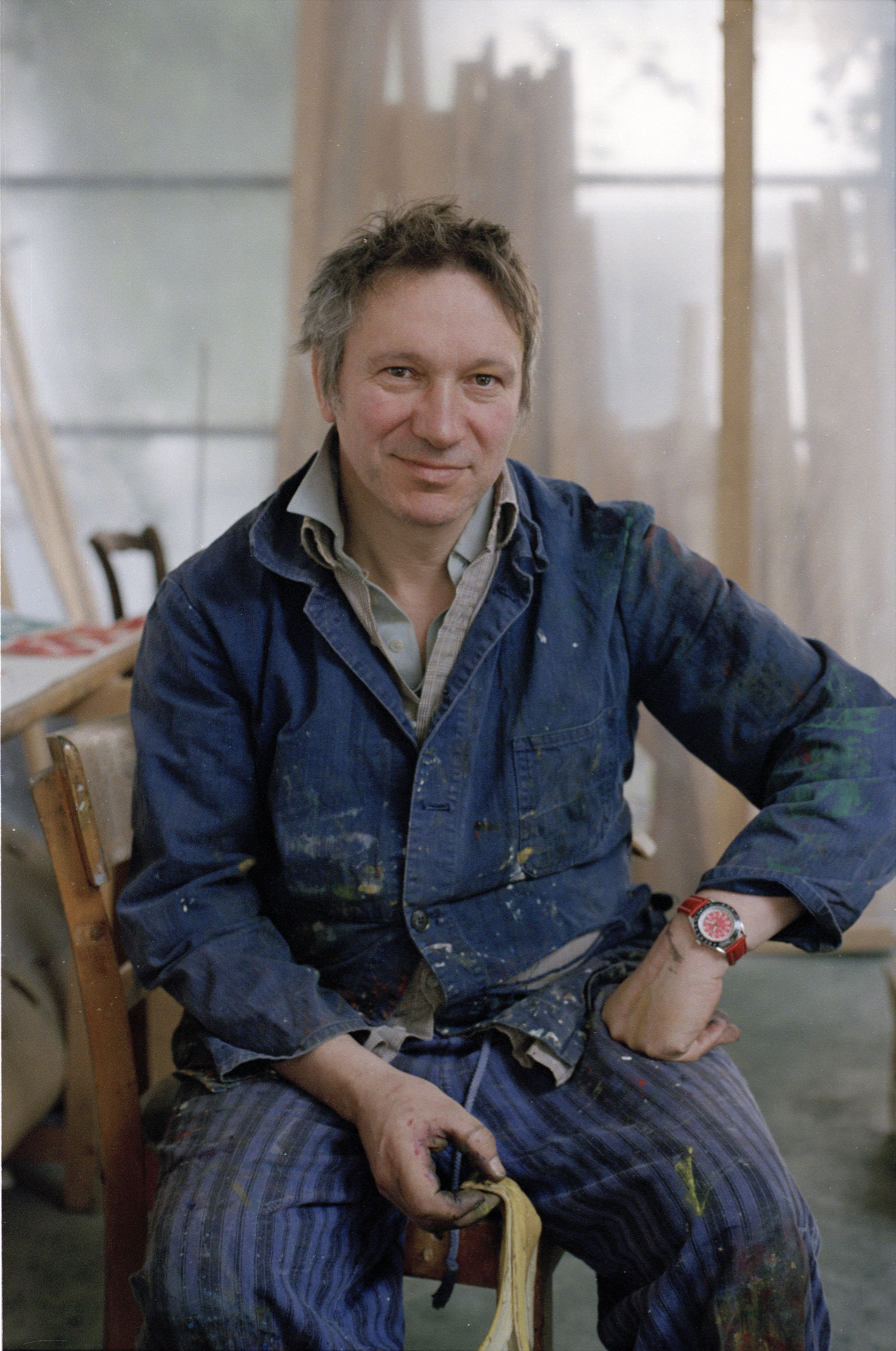
Norbert Prangenberg was an abstract painter, sculptor, and engraver. Though he had no formal training and did not fully engage with art until his 30s, Prangenberg did finally come up with a style that was uniquely his own, not fitting comfortably into the neo-expressionist or neo-geo movements of his time, in the 1970s and 1980s. At this time, he was considered a major figure in contemporary German art. Though he got his start with abstract paintings, he also became known for making sculptures of all sizes; and while his work initially appears abstract, the titles given sometimes allude to the human body or a landscape. As a trained gold- and silversmith, as well as a glassblower, he always showed an attention to materials and how they could be physically engaged with. He was interested in how his own two hands could affect the painting or sculpture's surface. Traces of the artist's hand appear literally throughout his entire oeuvre, before he lost the battle with liver cancer in 2012.

Jerry Zeniuk, a German and American artist of Ukrainian origin, is celebrated for his pioneering role in the realms of analytical, fundamental, and radical painting, movements that flourished primarily in the USA, Italy, and Germany during the 1970s. His art is distinguished by a meticulous focus on the essence of painting, exploring its potential and experiential spaces through a minimalist yet profound approach. Zeniuk's notable participation in documenta 6 in Kassel in 1977 underscored his significant contribution to these artistic trends, which has been recognized in numerous retrospectives.
Jerry Zeniuk's career includes an influential tenure as a professor at the Academy of Fine Arts in Munich from 1993 to 2011, further cementing his impact on the art world. His works, characterized by their subtle yet impactful exploration of color and form, have been included in the collections of prestigious institutions such as the Lenbachhaus in Munich, Neue Galerie in Kassel, Neues Museum Weserburg in Bremen, and internationally at the FRAC - Pays de la Loire in France and Kunstmuseum Winterthur in Switzerland, among others.
For collectors and art experts, Jerry Zeniuk's work represents a nuanced and intellectual approach to modern painting, offering depth and contemplation in each piece. His contributions have not only shaped the trajectory of contemporary art but also offer a timeless appeal to those who appreciate the layered complexities of visual expression.
Stay updated on Jerry Zeniuk's exhibitions and available works by signing up for newsletters tailored for art collectors and enthusiasts. This subscription ensures you remain informed about the latest sales and auction events featuring Zeniuk's work, providing unique opportunities to engage with the evolving landscape of contemporary art.
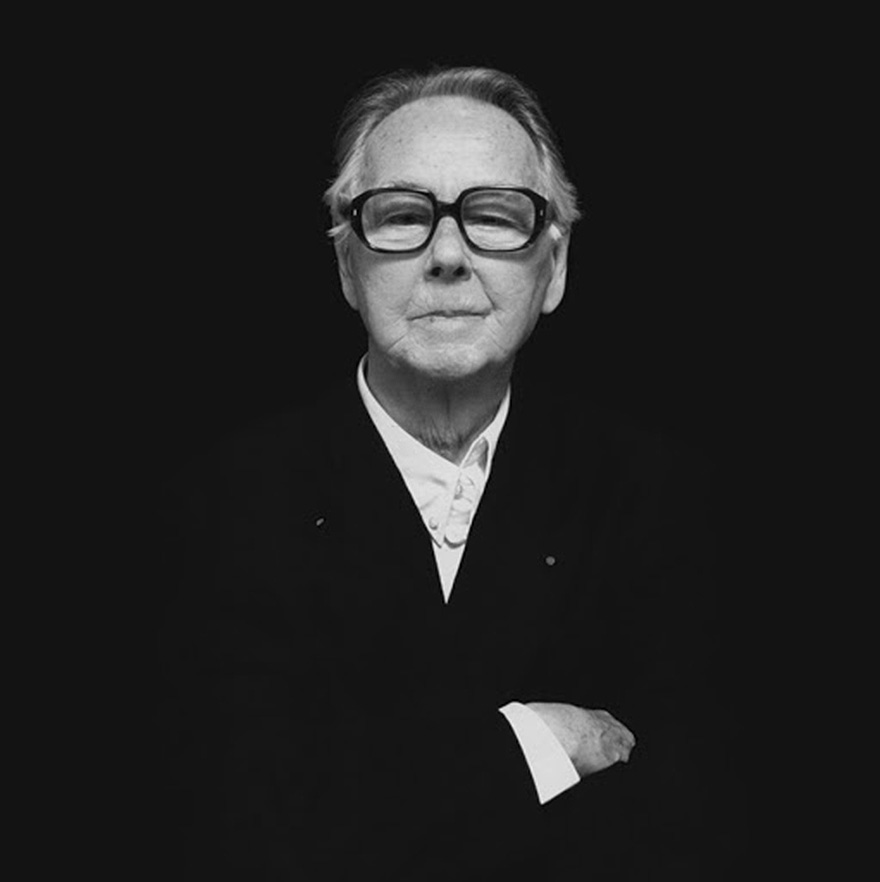
Victor Vasarely, a seminal figure in the Op art movement, was a Hungarian-French artist celebrated for his pioneering contributions to geometric abstract art. Born Győző Vásárhelyi in Pécs, Hungary, in 1906, Vasarely's artistic journey led him to Paris, where he honed a distinctive style marked by optical illusions and kinetic art. By the late 1940s, he had developed his iconic approach, utilizing geometric shapes and a limited color palette to create artworks that seemed to move and vibrate. His work "Zebra," created in 1937, is often cited as one of the earliest examples of Op art, showcasing his fascination with creating the illusion of depth and movement on a flat surface.
Throughout the 1950s and 1960s, Vasarely's exploration into optical effects deepened, leading to significant series like his "Vega" works. These pieces are characterized by their illusionary three-dimensional space, seemingly pushing and pulling the viewer into the canvas. His dedication to optical and geometric abstraction was not just a pursuit of aesthetic innovation but also an exploration of the viewer's perception, making the observer an integral part of the artwork.
Vasarely's influence extended beyond the canvas, impacting architecture, sculpture, and even space exploration. In 1970, he founded the first museum dedicated to his works in Gordes, followed by the establishment of the Fondation Vasarely in Aix-en-Provence in 1976, showcasing his vision of integrating art with the environment. His artworks have found homes in prestigious institutions like the Museum of Modern Art and have been celebrated in exhibitions worldwide.
For collectors and experts in art and antiques, Vasarely's works offer a mesmerizing blend of scientific precision and artistic expression, encapsulating a moment in art history where the boundaries between viewer and artwork blurred. His legacy is a testament to the power of visual perception and the endless possibilities of abstract art.
For those interested in delving deeper into Victor Vasarely's visionary world and perhaps acquiring a piece of this history, signing up for updates on new product sales and auction events related to Vasarely's works is highly recommended. Stay informed and embrace the opportunity to own a part of the optical and geometric abstraction movement that Vasarely so brilliantly pioneered.
